Kilbride Farm Simmentals – celebrating 50 years of achievement
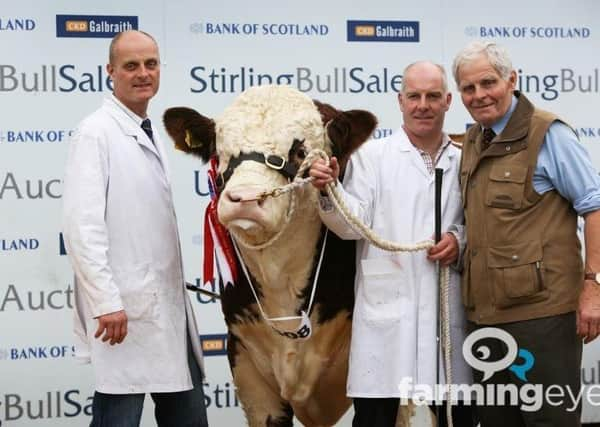

To mark this milestone achievement, next month will see the Robsons hold a very special Golden Anniversary heifer sale.
The event will reflect the family’s commitment to the highest standards of pedigree Simmental breeding over half a century. But more of this anon.
Advertisement
Advertisement
Getting to this stage of development has required a tremendous input on the part of all family members. It is a process that started with the clear vision shown by former Ulster Farmers’ Union President Billy Robson.
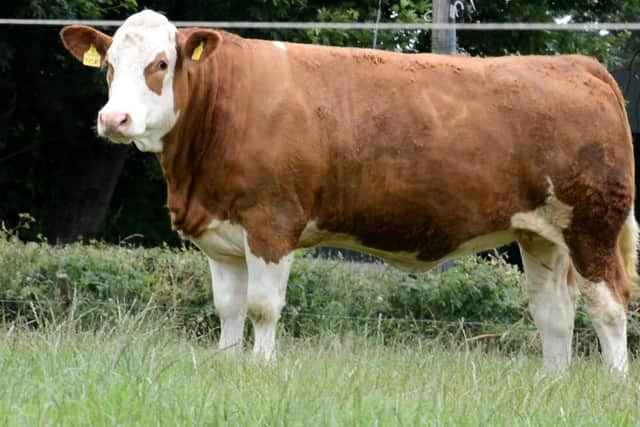

The dedication to the breed was subsequently confirmed in equal measure by the commitment shown by Billy’s sons, Michael and Norman. A third generation of the Robson family is involved in the business courtesy of Michael’s son Matthew and Norman’s son Angus.
The measures they have taken have fundamentally shaped the progress of Simmental breeding, not just in here in Northern Ireland but across this island and the rest of the UK.
There are very few pedigree cattle herds in Northern Ireland that can boast of a truly world leading reputation: Kilbride Farm Simmentals is one of these.
Advertisement
Advertisement
It goes without saying that the story of the herd is one worth telling. Earlier this week, Farming Life’s Richard Halleron spoke to Michael Robson with this objective very much in mind. Richard started the conversation by asking the question:
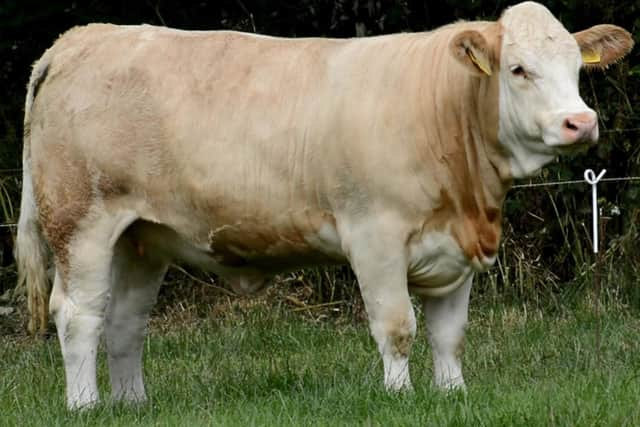

Can you confirm that the Robson family were amongst the first to import pedigree Simmental cattle into Northern Ireland?
“We were one of the original importers of Simmental cattle into Northern Ireland in 1971. We were allocated four heifers from the first importation, one turned out to be a half-sister of Scottish Neff, probably the most famous Simmental bull in the world. We are the only original breeders left in Northern Ireland.” Why did you opt for Simmentals in the first place?
“We were looking for an animal to improve efficiency, growth rate and confirmation in beef cattle and we felt that the Simmental breed met these criteria.”
Advertisement
Advertisement
What was the make-up of the first consignment: males and females?
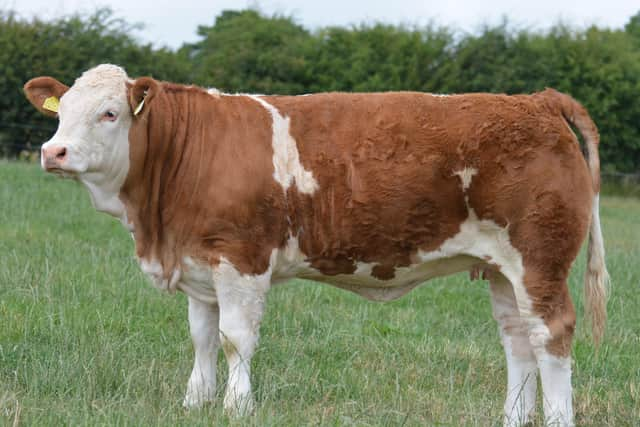

“About twenty people attended a meeting in 1970 of those interested in importing Simmentals. It was made clear by the Ministry that the cattle should be allocated in groups of not less than four heifers.
“Some of the interested breeders wanted larger numbers, of from six to twenty heifers, but most were content to settle for groups of four. The Ministry wanted six bulls for their AI Stud so the breed could be evaluated on commercial farms. A buying group was selected to travel to Germany to purchase one hundred and twenty heifers and seven bulls, the largest importer with twenty heifers wished to have a bull.
“The cattle were quarantined for two months in Germany and eventually arrived at the Northern Ireland Quarantine Station at Tolans Point on Lough Neagh in early January 1971. Michael was then asked about the significance of the Kilbride herd name.
Advertisement
Advertisement
He replied: “The farm is situated in the townland of Kilbride and is called Kilbride Farm, therefore we thought it was appropriate to have the same herd prefix.” What role has the Simmental breed played in developing Northern Ireland’s beef industry?
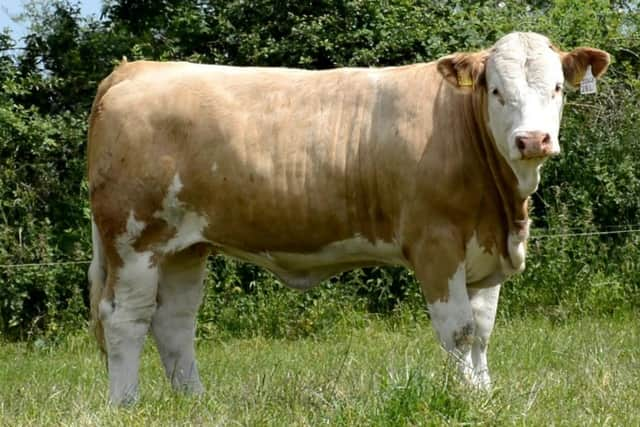

“The Simmental breed instantly outperformed native breeds and became known for its high growth rates, docility and their ability to turn forage into beef. As they were known as a dual-purpose breed originally in Europe, they also had the additional advantage of making an excellent suckler cow. Richard was also interested to learn about the differences between the Simmentals first imported and those on-farm in Northern Ireland today.
Michael explained: “When we compare the modern Simmental to those originally imported, we can see the benefit of fifty years selective breeding for the commercial traits required.
“This was helped by the use of the performance test station at Loughgall and on-farm recording.
Advertisement
Advertisement
“Today’s Simmental is now a much faster growing, efficient animal with vastly superior conformation while still maintaining maternal traits.
Michael was then asked to highlight some of the animals that have made a real difference in helping to develop the Kilbride herd that we recognise today?
He commented: “During the years from 1974 to 1976 the main bulls used were Siegfried, Scottish Neff and Panther, a bull imported for AI.
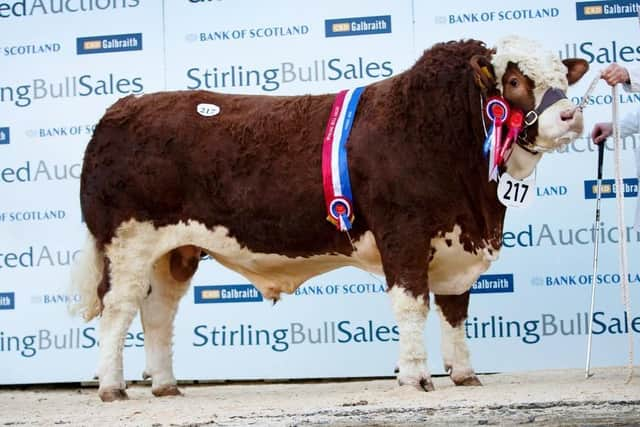

“A bull called Terrible was traced to Cambridge AI centre. A decision was made to import some straws from him, and a Swiss bred bull Ami also at Cambridge.
Advertisement
Advertisement
“These two bulls were responsible for a turning point in the Kilbride Farm herd in that, Ami produced the best heifers up to that time and Terrible gave a breakthrough as far as bulls were concerned, with one of his first sons Gavin giving the herd its first Championship at a Club Sale.
“Carn Eunice produced twin heifer calves by Ami and laid the foundation of the most successful family in the herd. Eunice females now make up over half the herd.”
Michael added: “Orage was purchased privately in France and arrived at Kilbride in Spring 1980. He was the single biggest improvement in the herd, instantly increasing size and frame. The average growth rate of his first calves increased by almost 100kg at 400 days over previous animals and they became regular winners of performance tests and topped sales.
“Two of his first sons, Lester and Lewis, went to the famous Perth bull sales in 1982 and sold for 5,000 and 4500 gns. A grandson Nevada, then became the first bull to have a 400-day weight of over 800kg and went on to sell in Perth for a then breed record of 8,000gns.”
Advertisement
Advertisement
Another game changer in the development of the Kilbride herd was the 1998 purchase of Milnafua Graduate.
“Graduate was never shown and went to work immediately. He was one of the building blocks in the restructuring of the herd,” said Michael.
“Seaview Prince Charming was purchased in Tullamore in 2004 and over the next few years would make a tremendous contribution to the herd leaving tremendous cows. Seven sons went to one Perth sale and averaged 7,000gns! He sired Kilbride Farm Tarrant, Supreme Champion in Stirling and Valour in 2008, who is still the highest priced private sale from the herd.”
He further explained:“We have not been afraid to look to other countries for new bloodlines and in 2013 we purchased Sneumgaard Imperator PP in Denmark.
Advertisement
Advertisement
“This homozygous polled bull, within a very short time, became a trait leader for five different traits and is the top bull for calving ease.
“His calves have proved very popular with commercial farmers with their easy calving and conformation. The polled factor is now becoming more and more important also. Two sons have been sold to AI centres and his daughters are now calving with excellent calves.
“With the increasing demand for polled cattle for ease of management and welfare we have now purchased another homozygous polled bull in the Czech Republic and hope to have semen home from him soon.”
Michael concluded: “Over the years we have been lucky to have had many very good bulls which have turned out to be some of the best in the breed and the heifers offered in the sale are a culmination of 50 years of focussed breeding with the emphasis on sound, structurally correct cattle suitable for modern day beef production.”
Advertisement
Advertisement
The upcoming Kilbride Farm 50th anniversary sale will feature 17 elite heifers. This will be a an export qualified timed auction, held in conjunction with Ballymena Livestock Market and MartEye.
The event will get underway on Thursday August 19th and continue through until Saturday August 21st.
Michael Robson again: “In the sale we will be offering heifers from all of the main cow families within the herd. These heifers will range from in-calf to yearling animals. “This is an opportunity to purchase some of our best heifers at this export qualified sale, which would not normally be available!”
He continued: “The format of the event is becoming very popular as a livestock sales platform. It means there is no requirement for the animals to be physically brought to a mart or sale ring. They remain on farm throughout the entire sale process.”
Advertisement
Advertisement
Michael believes this is very much the future, particularly when it comes to selling elite, high pedigree status animals.
The sale catalogue is now available on line (www.kilbridefarm.co.uk). All animals catalogued for the sale can be views on farm, by request, prior to the sale getting underway.
“Potential buyers from Scotland and the Republic of Ireland have already signalled their intention of visiting the farm over the coming days to view the stock,” Michael further explained.
“Buyers must register with MartEye in order to actively participate in the sale.”
Advertisement
Advertisement
The word ‘elite’ is often used in a very broad sense. But in the context of Kilbride Farm Simmentals, the term is spot on the money.
Back in 2008, the Simmental World Congress was hosted by Great Britain. But such was the demand from attending delegates to visit Kilbride farm that a bespoke visit to Northern Ireland had to be organised in order to facilitate this requirement.
Further testimony to the elite pedigrees of Kilbride Farm breeding stock comes courtesy of the international demand for bulls and breeding females.
In addition, Kilbride Farm bulls have performed particularly well for AI Companies. Semen and embryos have been exported to many parts of the world: the Kilbride Farm prefix is recognised in most countries where Simmentals are bred.
Advertisement
Advertisement
Michael Robson concluded: “In the early years we had much success in the show ring including the first ever Simmental Interbreed Champion at the RUAS and the Male and Reserve Champion at The Royal Show.
“However, a decision was taken in 2000 to cease showing as it was not making any contribution to our business. Also our customers were demanding higher health standards and we thought this could be most easily achieved by not taking stock out and bringing them home again.
“Our policy of concentrating on bull sales has been very successful. We are very proud to have produced seven Supreme Champions at the Perth and Stirling Sales, with many high prices up to 22,000 guineas.”